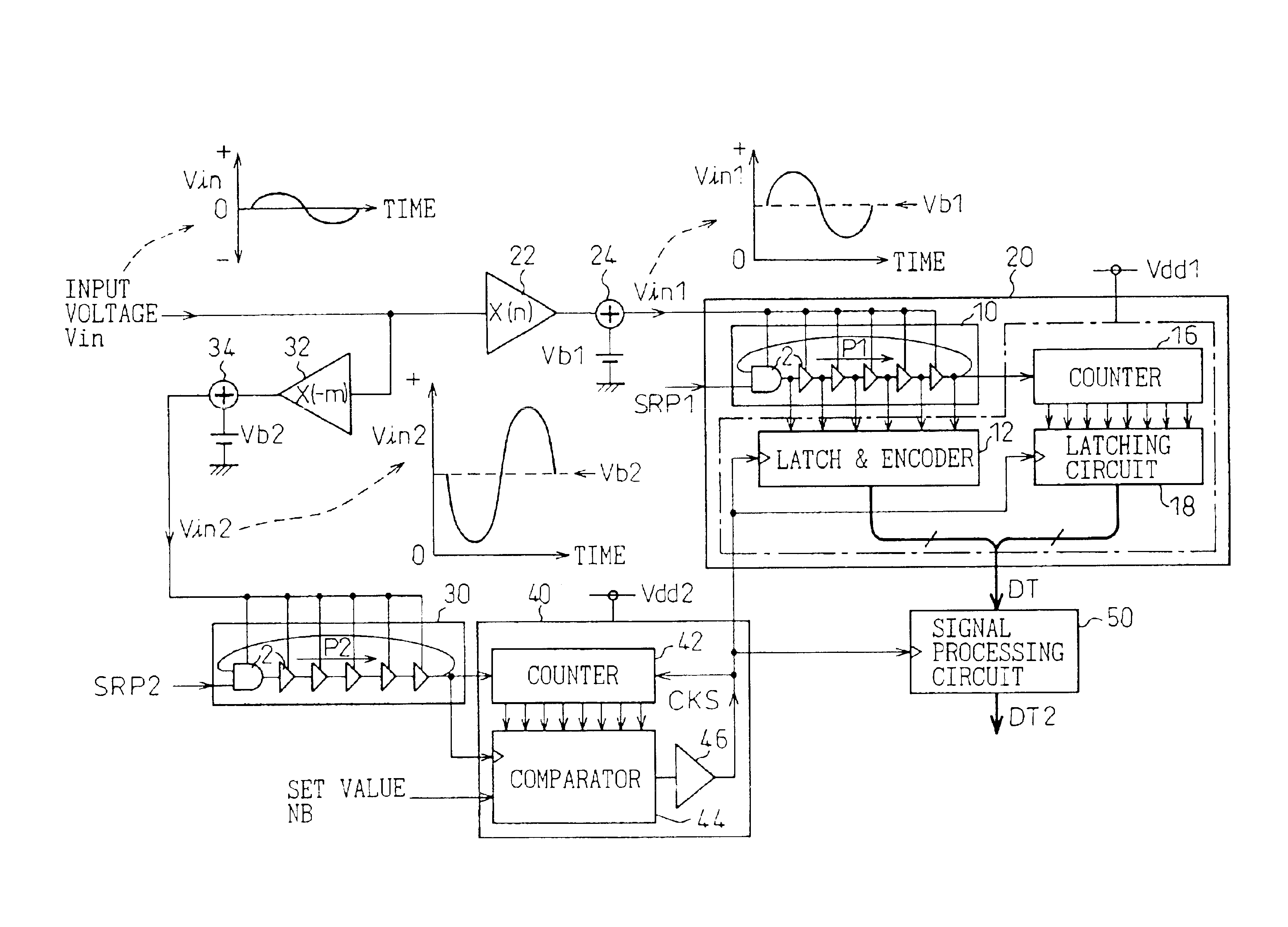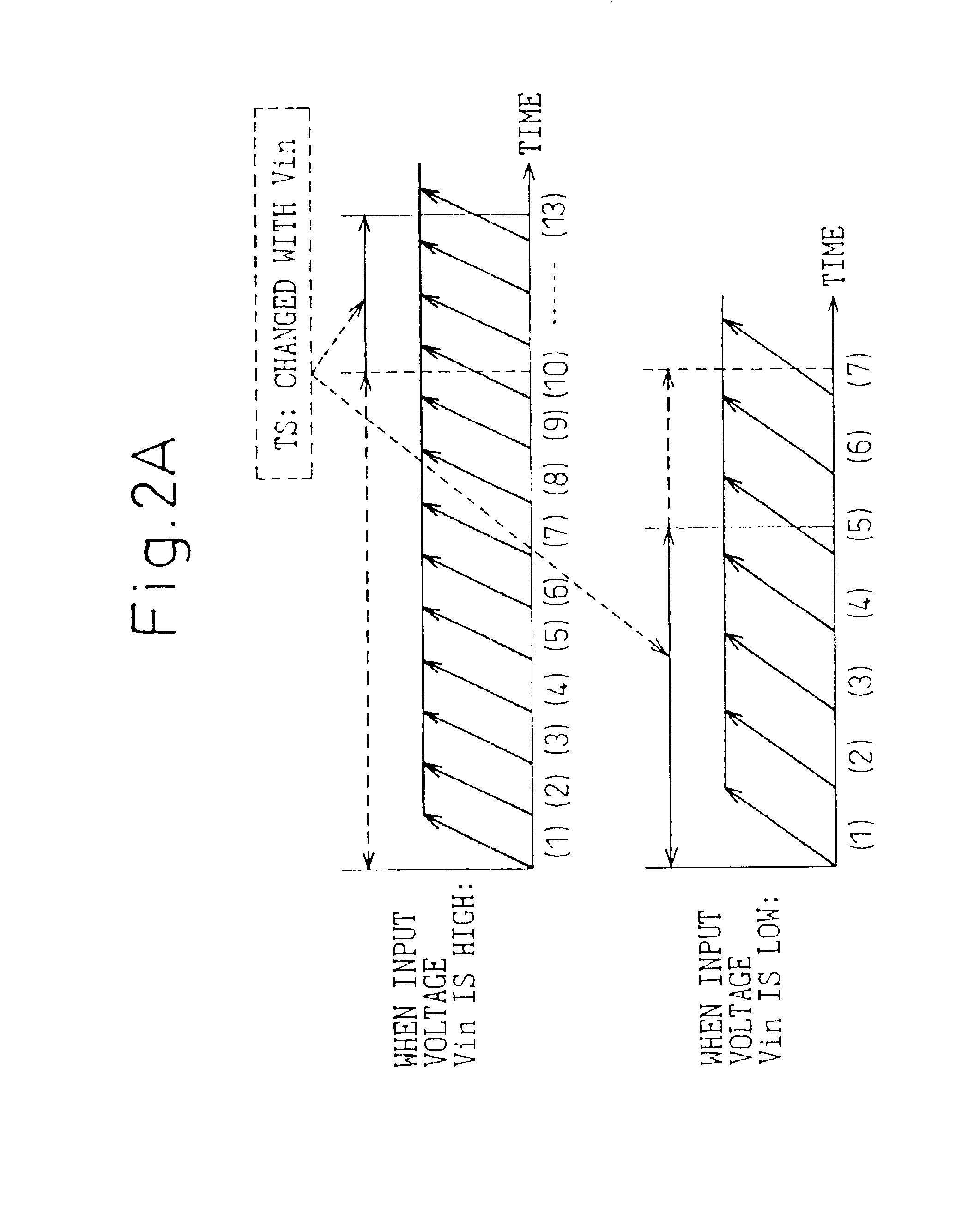Analog-to-digital conversion method and device
a conversion method and digital data technology, applied in analogue/digital conversion, physical parameter compensation/prevention, instruments, etc., can solve the problems of reducing the number of bits constituting digital data produced, reducing resolution, and limited resolution improvement in analog-to-digital conversion, so as to improve resolution and the effect of variable driving voltag
- Summary
- Abstract
- Description
- Claims
- Application Information
AI Technical Summary
Benefits of technology
Problems solved by technology
Method used
Image
Examples
first embodiment
FIG. 1 shows the overall configuration of an analog-to-digital conversion device of the first embodiment in which the present invention is implemented.
The analog-to-digital conversion device of the present embodiment is a device for converting an input voltage Vin into numerical data according to the analog-to-digital conversion method having the first aspect of the present embodiment implemented therein. Herein, the analog-to-digital conversion device is designed in efforts to accomplish the first object of the present invention (that is, to improve the resolution in analog-to-digital conversion or raise an analog-to-digital conversion rate). Similarly to the conventional analog-to-digital conversion device shown in FIG. 8B, the analog-to-digital conversion device includes an analog-to-digital conversion unit 20 composed of a pulse delay circuit 10 realized with a ring delay line (RDL), a latch and encoder 12, a counter 16, and a latching circuit 18. The pulse delay circuit 10 is e...
PUM
 Login to View More
Login to View More Abstract
Description
Claims
Application Information
 Login to View More
Login to View More - R&D
- Intellectual Property
- Life Sciences
- Materials
- Tech Scout
- Unparalleled Data Quality
- Higher Quality Content
- 60% Fewer Hallucinations
Browse by: Latest US Patents, China's latest patents, Technical Efficacy Thesaurus, Application Domain, Technology Topic, Popular Technical Reports.
© 2025 PatSnap. All rights reserved.Legal|Privacy policy|Modern Slavery Act Transparency Statement|Sitemap|About US| Contact US: help@patsnap.com



